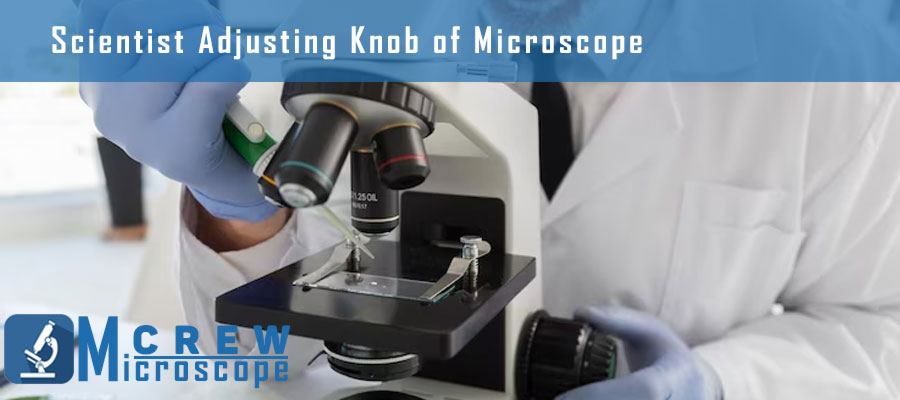While working in the lab, you come across several lab instruments. One of the most important lab instruments is the microscope. Microscopes are used to see images of objects otherwise invisible to the naked eye. They are used to view minute details and structures of specimens. The components of microscopes work in combination to generate an enlarged image of the specimen to be observed. The different types of microscopes have different magnifications and resolution powers.
Everybody must have seen a microscope in their college or school. But have you ever wondered how to use them or set them up? Microscopes are expensive instruments, requiring special care and attention while using them. Any mishandling while setting them up can damage them. On this platform, you will learn everything you need to know about setting up a microscope.
Steps to Setting Up a Microscope

Follow these steps to learn about how to set up a microscope.
Learning the Parts of Microscope
Before using the microscope, you must get familiar with the different parts or components of the microscope and their functions.
Stage
It is the surface where the specimen to be observed is placed. This specimen is set through stage clips.
Arm
It is the portion of the microscope connecting the base to the eyepiece.
Objective lens
The objective lens magnifies the image. There are different magnification ranges for different lenses, so you can easily switch between these objective lens.
Knobs
There are two knobs present on the microscope. One is a coarse knob used to move the objective lens and roughly focuses on the specimen. Another knob is the fine knob used to focus on the specimen specifically.
Light Source
The light source functions to provide light to view the image. The light source is present at the base of the stage.
Diaphragm
It is used to adjust the light on the image formed.
Find a Flat Surface
Make sure to place the microscope on a flat surface. This prevents slides or anything from falling off the surface.
Plugging into the Power Source
Some microscopes require an electrical connection to access the LED light on them. For such a microscope, plug the microscope into an electrical source. If you have a microscope that uses mirrors to reflect natural light, then it is not required to plug it into the electrical source.
Adjusting the Nosepiece
Adjust the nosepiece in such a way that you select the objective lens of the lowest power. The objective with 40x power works best as it allows a greater field of view. By adjusting the nosepiece, you will see most of the object and zoom into the details as you want.
Adjusting the Slide
Now, it’s time to insert the slide. You can prepare slides by yourself, or you can also use already prepared slides. Place the prepared slide on the stage, and observe through the objective lens. Ensure the objective lens is just above the slide for a clear image. Be careful while using glass slides, as they can easily get broken.
Adjusting Coarse and Fine Knobs

Adjust the coarse knob to bring the objective lens away from the slide until the image of the specimen becomes clear. Then adjust the fine knob to focus the specimen.
Adjusting the Diaphragm
To create a sharp image, adjust the diaphragm to allow maximum light to pass through. This will show the specimen with a sharp contrast.
Using Different Lenses
Once you have made all the proper adjustments, you can use different objective lenses with different magnification powers. With objectives of higher power, you can see greater details.
How to Clean and Store the Microscope?
As we have already mentioned, microscopes are expensive equipment, thus requiring special care. It is essential to clean and properly store your microscope to prolong its life. Use a non-solvent solution and a microfiber cloth to clean the microscope. A brush is generally used to remove any dust from the microscope body. When you have used the microscope, make sure to place it in the dust cover to store it in a proper and secure place. In this way, the lens gets prevented from the dust.
Bottom Line
Microscopes produce an enlarged image of objects so minute that they are invisible to the unaided eye. A microscope is an expensive piece of equipment and requires special care while setting it up. To set up the microscope, you first need to learn about different parts of the microscope and then place it on a flat surface. Adjust the objective, nosepiece, and coarse and fine knobs to make a clear and sharp image of the object under examination.
Some microscopes need to be plugged into the electrical source. Make sure you know if your microscope requires an electrical source or not. You can examine any slide once the microscope is properly set up.


Leave a Reply